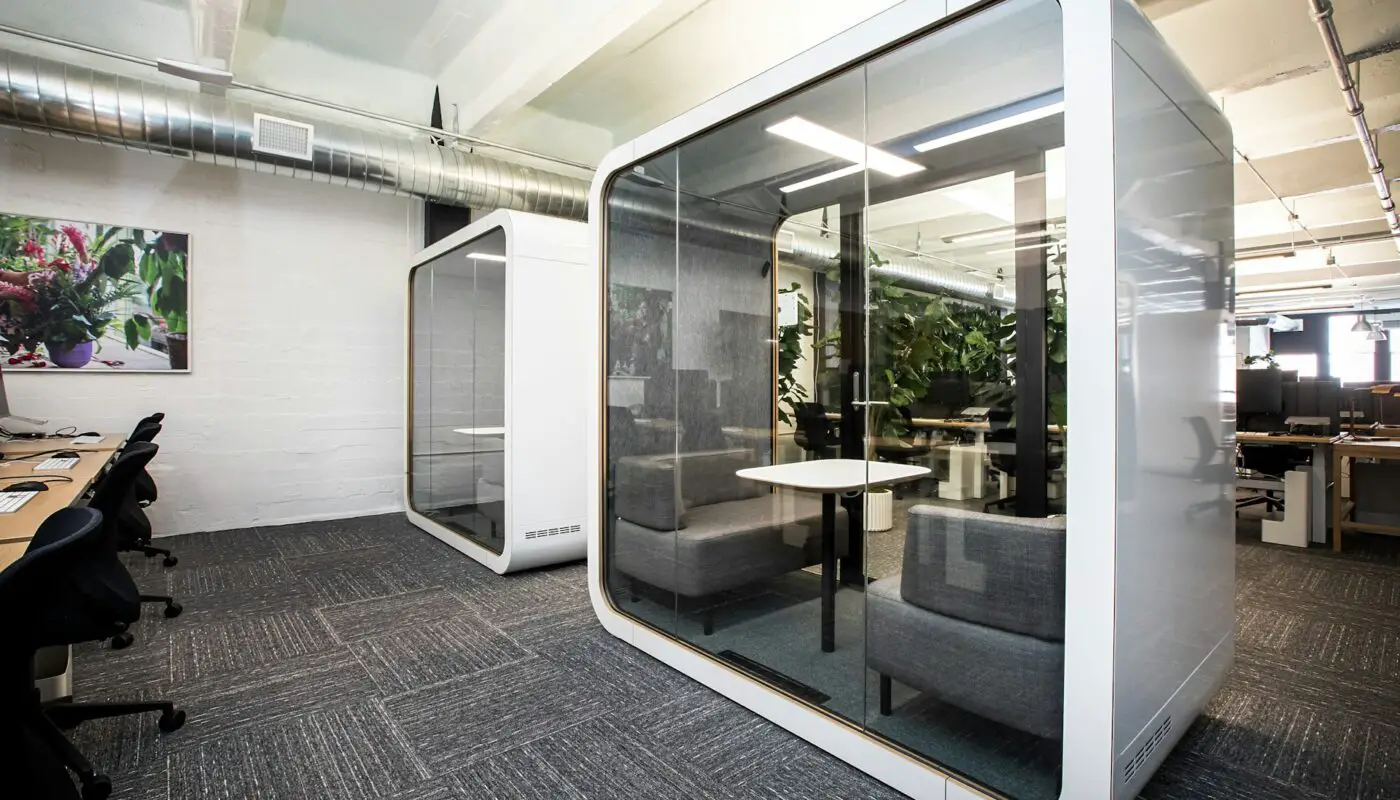In today’s business world, workplace transformation strategies are crucial. In today’s dynamic business landscape, the significance of a well-designed workplace cannot be overstated. A thoughtfully transformed workspace can be a catalyst for enhanced productivity, creativity, and employee well-being. In an era where the average person spends a significant portion of their day at work, the environment they operate in is more than just a backdrop—it’s a vital component of their professional experience.
Table of Contents
The Role of Technology in Modern Workspaces

This is particularly true in the context of evolving work cultures and the increasing emphasis on employee satisfaction and engagement. In this article, we will explore various strategies to significantly transform your workplace, making it not only a place of work but a hub of innovation, collaboration, and efficiency.
From the initial steps of commercial furniture installation to the ongoing process of maintaining and updating the space, each element contributes to creating an environment that resonates with employees and aligns with the company’s objectives.
These changes, while potentially challenging to implement, can lead to a more motivated workforce and a stronger, more successful business.
1. Upgrading Furniture
A significant transformation can begin with professional commercial furniture installation. Pickens-Kane stands at the forefront of the market in contract furniture installation and service. Their expertise and commitment to quality have established them as a go-to provider in this specialized field.
Investing in high-quality, ergonomic furniture not only enhances the visual appeal of the workspace but also improves employee comfort and productivity. New furniture, when thoughtfully selected and professionally installed, can redefine your office space, making it more conducive to efficient work and collaboration. It’s a worthwhile investment that pays off in terms of both employee satisfaction and long-term workplace functionality.
- Selecting ergonomic and aesthetic furniture options
- The importance of professional installation for optimal setup
- Viewing furniture as a long-term investment in workplace quality

2. Implementing Efficient Layouts
The layout of a workplace is fundamental to its functionality. Redesigning the office layout can significantly impact workflow, communication, and overall efficiency. Depending on the nature of the work, an open-plan layout might encourage collaboration, while a cubicle-based layout could be better for tasks requiring concentration. An efficient layout balances the need for collaboration with the need for private, focused work areas.
- Tailoring the layout to the nature of the work
- Balancing open spaces with private areas
- Designing for enhanced communication and workflow efficiency
3. Investing in Technology Upgrades
In today’s fast-paced business world, staying abreast of technological advancements is vital. Upgrading workplace technology – from computers and software to communication tools – can drastically enhance productivity. Smart devices and cloud-based software facilitate not only day-to-day operations but also support remote and hybrid work models, making them indispensable in the modern workplace.
- Staying updated with current technology trends
- Incorporating smart devices and advanced software
- Facilitating remote and hybrid work through technology
4. Enhancing Lighting and Ventilation
Good lighting and ventilation are essential for creating a comfortable work environment. Poor lighting can lead to eye strain and fatigue, while inadequate ventilation can affect air quality and employee health. Upgrading to energy-efficient lighting and climate control systems not only improves the work environment but also reduces energy costs. Natural light should be maximized wherever possible, and ventilation systems should be regularly maintained to ensure good air quality.
- Upgrading to energy-efficient lighting systems
- Maximizing natural light and improving ventilation
- Balancing employee comfort with energy efficiency
5. Incorporating Green Spaces
Introducing green spaces into the workplace has multiple benefits. Plants and natural elements can reduce stress, improve air quality, and enhance the overall aesthetics of the office. Creating a biophilic design with indoor gardens or living walls can transform the workplace into a more serene and inviting space. These green spaces not only bring a touch of nature indoors but also contribute to employee well-being and productivity.
- Benefits of plants and green areas in reducing stress
- Ideas for incorporating biophilic design elements
- Enhancing workplace aesthetics with natural elements
6. Fostering a Collaborative Environment
A collaborative environment is key to fostering innovation and teamwork. Designing communal areas that encourage interaction can significantly enhance the workplace atmosphere. Incorporate comfortable seating areas, interactive whiteboards, and technology that facilitates group discussions and brainstorming sessions. These spaces should be inviting and equipped with the tools necessary for effective collaboration. It’s not just about the physical space; it’s also about cultivating a culture that values and encourages teamwork and open communication.
- Design spaces specifically for teamwork and collaboration
- Equip communal areas with the necessary technology and comfortable furniture
- Cultivate a culture that values open communication and teamwork
7. Prioritizing Ergonomics
Employee well-being should be at the forefront of any workplace transformation. Ergonomic furniture and equipment can prevent work-related injuries and increase comfort, which in turn boosts productivity. Invest in adjustable desks, ergonomic chairs, and proper computer setups to cater to diverse physical needs. Regular ergonomic assessments can also help in making continual improvements to ensure a healthy working environment.
- Invest in ergonomic furniture and equipment
- Regular ergonomic assessments for continual improvement
- Focus on employee well-being and comfort
8. Adding Personalization and Branding
Personalizing the workplace to reflect the company’s culture and values can significantly impact employee morale and brand identity. Allow employees some freedom to personalize their own spaces within company guidelines to help them feel more connected and invested in their work. Incorporating branding elements in the decor, such as company colors or logos, can also reinforce the company’s identity and create a sense of pride and belonging.
- Encourage personalization within company guidelines
- Use branding elements in the decor to reinforce the company’s identity
- Balance personalization with a unified brand image
9. Creating Multipurpose Spaces
In modern work environments, versatility is key. Designing spaces that can serve multiple functions – such as areas that can be used for relaxation, informal meetings, or creative brainstorming – can maximize the utility of the workplace. These multipurpose spaces should be adaptable and easily reconfigurable to meet the changing needs of the business and its employees.
- Design versatile areas for various activities
- Ensure spaces are adaptable and reconfigurable
- Maximize space utility with multifunctional design
10. Regularly Updating and Maintaining the Workplace
To keep the workplace fresh and appealing, regular updates and maintenance are essential. This includes keeping the décor up-to-date, ensuring all facilities and equipment are in good working condition, and adapting the space to meet evolving business needs and employee feedback. A well-maintained and regularly updated workplace not only functions better but also demonstrates a commitment to providing a quality work environment.
- Keep décor and facilities up-to-date
- Regular maintenance to ensure optimal functionality
- Adapt space to evolving business and employee needs
Final Thoughts About Workplace Transformation Strategies
Transforming a workplace involves more than just physical changes; it’s about creating an environment that supports productivity, innovation, and employee well-being. From fostering collaboration and prioritizing ergonomics to incorporating branding and maintaining the space, each aspect plays a crucial role in creating a dynamic and efficient workplace. By implementing these strategies, businesses can create a workplace that not only meets the functional needs of their employees but also reflects the culture and values of the organization.
Related Reading

Drug and Alcohol Consortium – 5 Proven Strategies for Harmonizing Workplace Wellness
Chemical Safety in the Workplace: Handling, Storage, and Disposal Best Practices
Transformative Leadership: Strategies for Personal and Professional Growth



